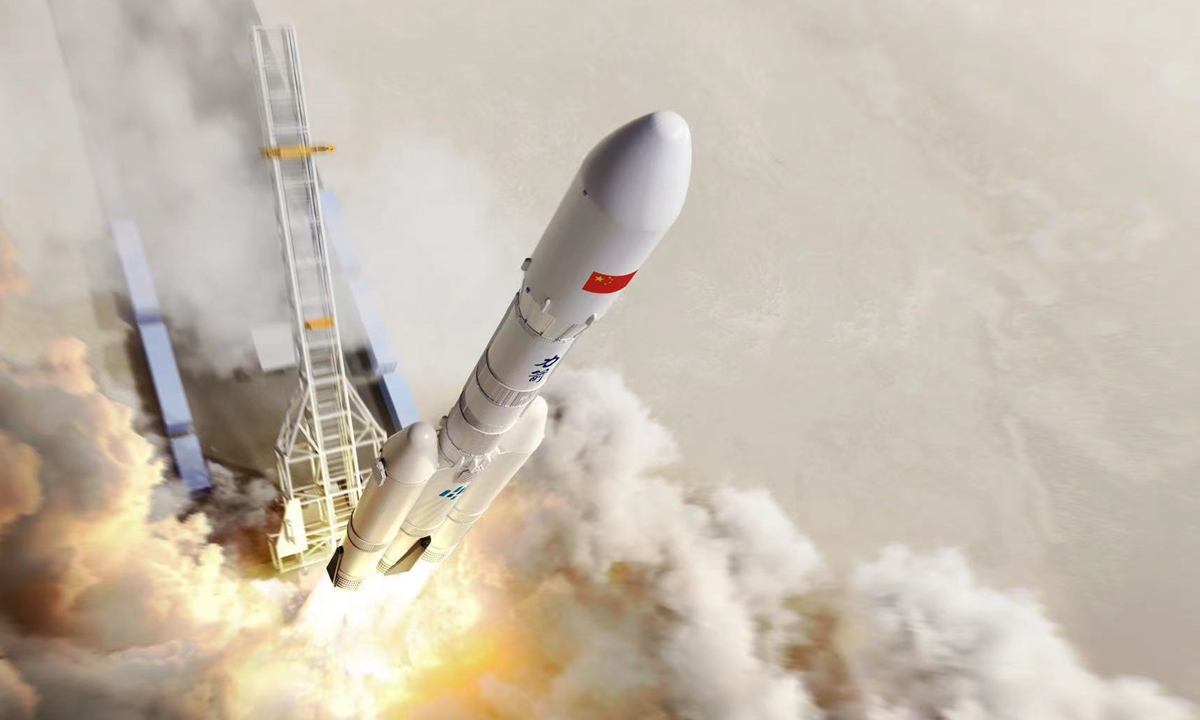China eyes launching low

Photo: Courtesy of CAS Space
Commercial aerospace company CAS Space and the Chinese Academy of Sciences Microsatellite Innovation Research Institute have confirmed a plan that the low-cost cargo spacecraft product developed by the Microsatellite Innovation Institute will be launched by the company’s Kinetica 2 liquid carrier rocket and will undergo the first flight mission in 2025 for comprehensive on-orbit assessment and verification, the Global Times learned from the company on Friday.
The first flight can also carry low-orbit internet constellation satellites.
To further reduce the cost of transporting cargo to the space station and enhance the flexibility of cargo transportation, the China Manned Space Agency issued in May 2023 the call for proposals for the overall plan of the low-cost cargo transportation system for the Chinese space station.
The CAS Space and the Microsatellite Innovation Institute jointly conducted ship-rocket integration verification and key technology research. Its design of an integrated "Ship-Rocket-Cargo" space-to-ground transportation system utilizes a low-cost cargo spacecraft and the Kinetica 2 liquid carrier rocket to provide a solution.
The proposal successfully won the qualification bidding organized by the China Manned Space Agency and entered the detailed design phase.
Kinetica 2 is a medium-sized liquid carrier rocket independently developed by CAS Space. Inheriting the technology of its previous generation of rocket, Kinetica 2 adopted a CBC (Common Booster Core) configuration, with a common core diameter of 3.35 meters, a total length of 53 meters, a takeoff mass of 628 tons, and a takeoff thrust of 766 tons.
The rocket has a SSO (Sun-synchronous orbit) payload capacity of 7.8 tons and a LEO (low Earth orbit) payload capacity of 12 tons. It has the capability to launch satellites into sun-synchronous orbit, low Earth orbit, and transfer orbit. With its large carrying capacity and low cost, it can be the main rocket for China's low-cost cargo spacecraft, satellite internet networking, space science satellite launches, and deep space exploration missions.
The three core requirements of the cargo transportation system for the Chinese space station are high payload, high efficiency, and low cost. The research team, through the "Ship-Rocket-Cargo" plan to meet these requirements, focused on key technologies such as low-orbit batch production design, multi-method weight reduction and quality assurance, high-intelligence assistance in packaging, and fully digitalized design. The solution has flexible configuration, high efficiency, and cargo transportation guarantee, resulting in five features: ultra-cost effective, ultra-fast, ultra-load capacity, ultra-safe, and ultra-comfortable.
The planned Kinetica 2 launch is the first time that a Chinese commercial aerospace company participates in the development and launch of the low-cost cargo transportation project for the Chinese space station. This mission is of great significance in enhancing China's aerospace sector's innovation vitality and market competitiveness.
Global Times
猜您喜欢
相关伤感签名





